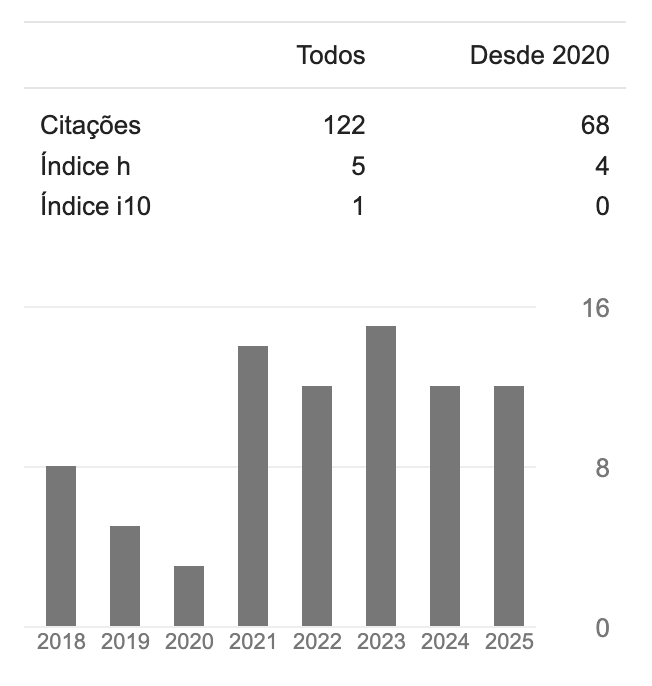TRADUÇÃO E NOTAS DE A TRANSITORIEDADE, DE SIGMUND FREUD
DOI:
https://doi.org/10.52521/poly.v17i3.14084Abstract
Durante a Primeira Guerra Mundial, em 1915, Sigmund Freud escreveu Vergänglichkeit, um pequeno ensaio que reflete, entre outros temas, sobre a efemeridade da vida e da beleza. Publicado originalmente em alemão, o ensaio explora como a consciência da transitoriedade influencia a psique humana, através de um diálogo entre Freud, um jovem poeta e um amigo taciturno. Freud discute a fragilidade do belo, a valorização da transitoriedade, o luto, a libido, o impacto da guerra e a renovação de sentido diante da inevitabilidade do declínio.
Downloads
Riferimenti bibliografici
Referências
Andreas-Salomé, L. (1964). The Freud Journal (S. A. Leavy, Trans. & Introduction). New York, NY: Basic Books, Inc.
Astor, D. (2016). Lou Andreas-Salomé. L&PM Pocket.
Becker, E. (1973). Denial of death. The Free Press.
Campbell, J. (2008). The hero with a thousand faces. New World Library.
Carrier, D. (2008). A world art history and its objects. Penn State Press.
Freedman, R. (1998). Life of a Poet: Rainer Maria Rilke. Northwestern University Press.
Freud, S. (1916). Vergänglichkeit. In Das Land Goethes 1914–1916. Ein vaterländisches Gedenkbuch (pp. 37-38). Stuttgart und Berlin: Deutsche Verlangs-Anstalt.
Freud, S. (1920). Jenseits des lustprinzips. Internationaler Psychoanalytischer Verlag.
Freud, S. (1949). Zeitgemässes über Krieg und Tod (1915). In: Gesammelte Werke, vol. X. Frankfurt am Main: Fischer Verlag, p. 323-55.
Freud, S. (1955). Hemmung, Symptom und Angst (1926). In Gesammelte Werke (Vol. XIV). London: Imago Publishing Co., Ltd.
Freud, S. (1957). Mourning and melancholia (1917 [1915]). In J. Strachey (Ed.), The Standard Edition of the Complete Psychological Works of Sigmund Freud (Vol. XIV, pp. 239-260). London: Hogarth Press and the Institute of Psycho-analysis.
Freud, S. (1957). On Transience (1916 [1915]). In J. Strachey (Ed.), The Standard Edition of the Complete Psychological Works of Sigmund Freud (Vol. XIV, pp. 303–307). London: Hogarth Press and the Institute of Psycho-analysis.
Freud, S. (1999). Trauer und Melancholie (1917 [1915]). In S. Freud, Gesammelte Werke – Chronologisch geordnet. Frankfurt am Main: Fischer Verlag.
Freud, S. (2000). Das Ich und das Es (1923). In Sigmund Freud Studienausgabe (Vol. 3, pp. 273-330).
Freud, S. (2022). Die zukunft einer illusion. BoD–Books on Demand.
Heidegger, M. (2012). Der ursprung des kunstwerkes. Klostermann.
Lehmann, H. (1966). A conversation between Freud and Rilke. The Psychoanalytic Quarterly, 35(3), 423-427.
Levine, M. (2018). Freud’s aesthetics: artists, art and psychoanalysis. In Psychoanalysis and Philosophy of Mind (pp. 137-162). Routledge.
Polan, D. B., Jauss, H. R., & Bahti, T. (1983). Toward an aesthetic of reception. Journal of Aesthetics and Art Criticism, 41(3), 354.
Razinsky, L. (2015). On Time, Transience and Literary Creation: Freud and Rilke a Century Ago. Forum for Modern Language Studies, 51(4), 464-479.
Rilke, R. M. (2013). Elegias de Duíno. Porto Alegre: Globo Livros.
Roudinesco, E., & Plon, M. (1998). Dicionário de psicanálise (V. Ribeiro, Trans.). Rio de Janeiro: Jorge Zahar.
Schopenhauer, A. (1919). Die Welt als Wille und Vorstellung, I. Brockhaus.
Vattimo, G. (1999). La fine della modernità. Milan: Garzanti.
Winter, J. (1998). Sites of memory, sites of mourning: The Great War in European cultural history. Cambridge University Press.
##submission.downloads##
Pubblicato
Come citare
Fascicolo
Sezione
Licenza
Copyright (c) 2024 Matheus dos Reis Gomes

TQuesto lavoro è fornito con la licenza Creative Commons Attribuzione 4.0 Internazionale.











